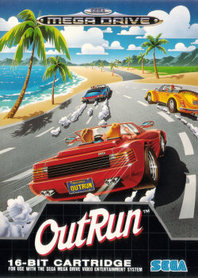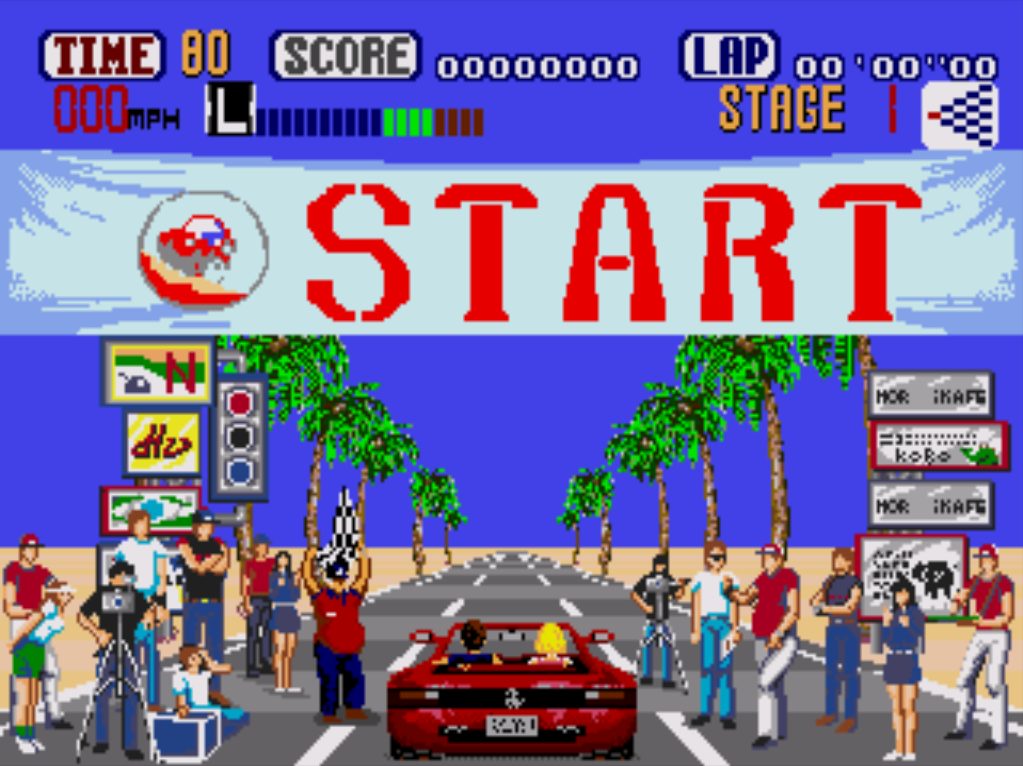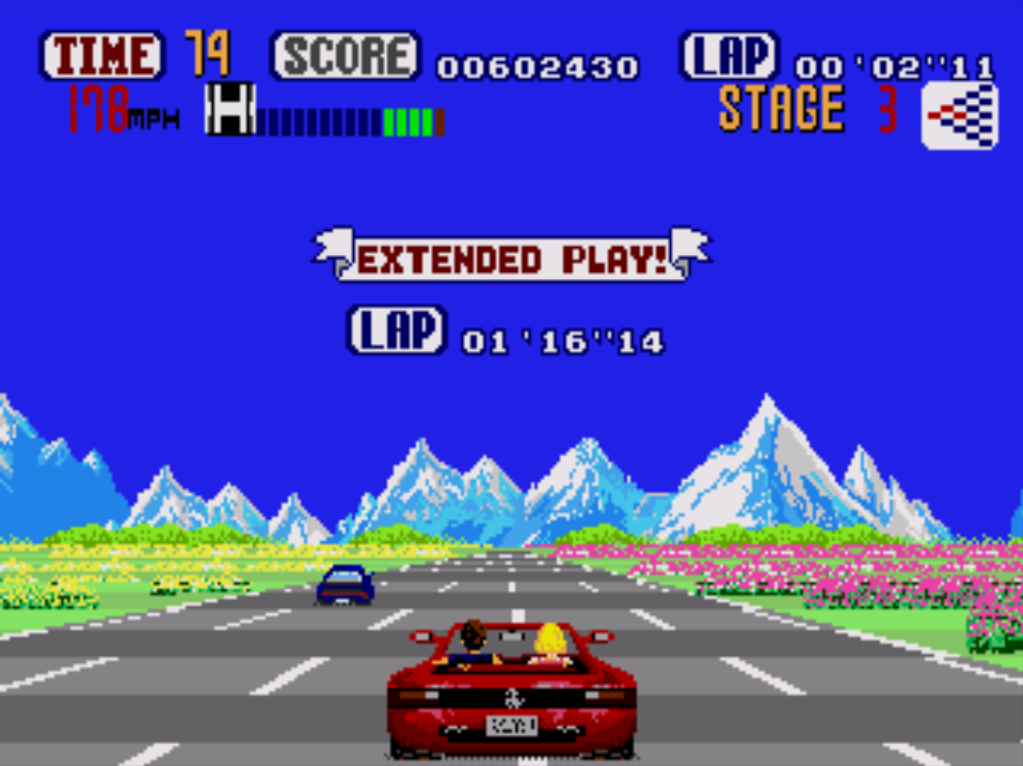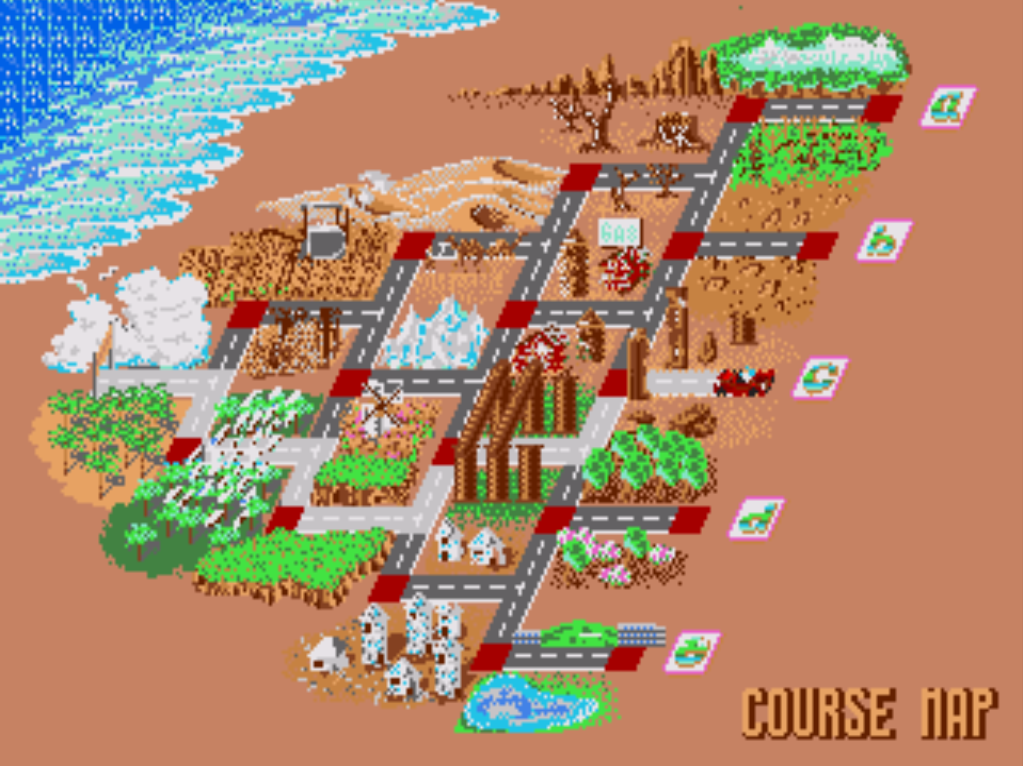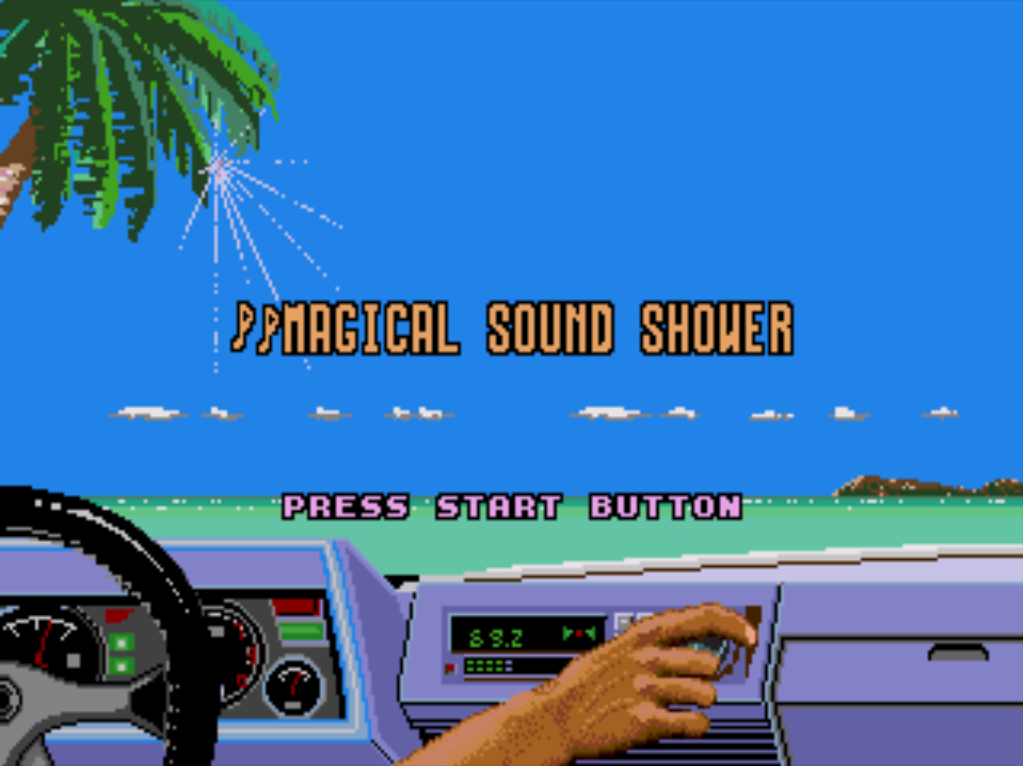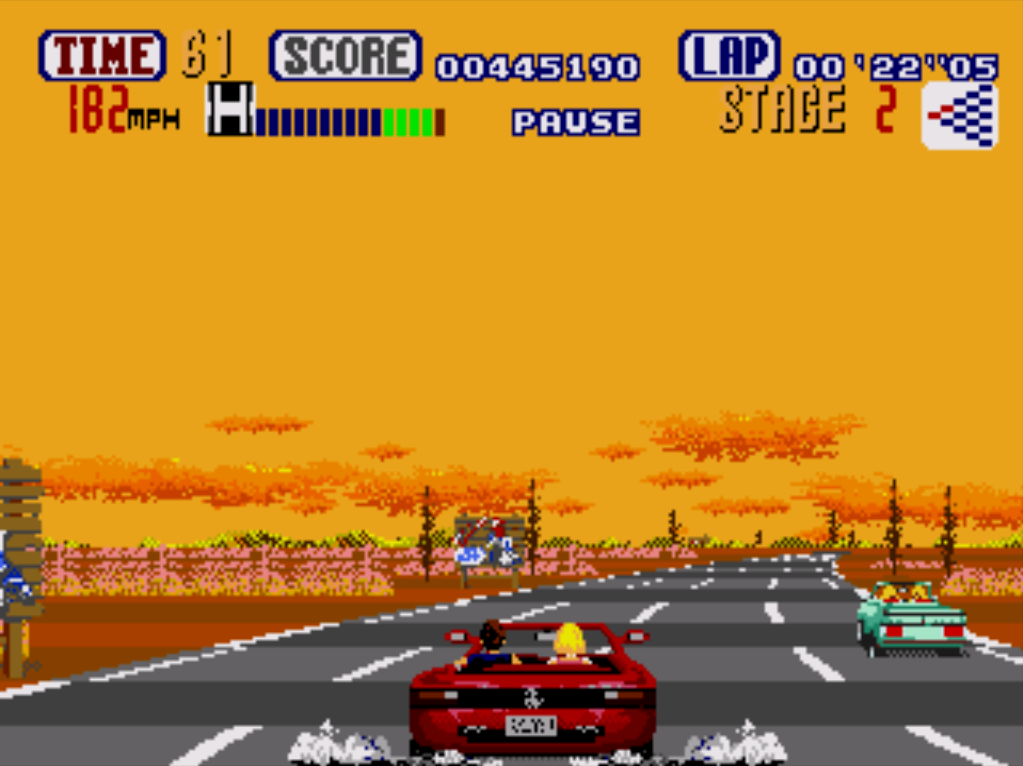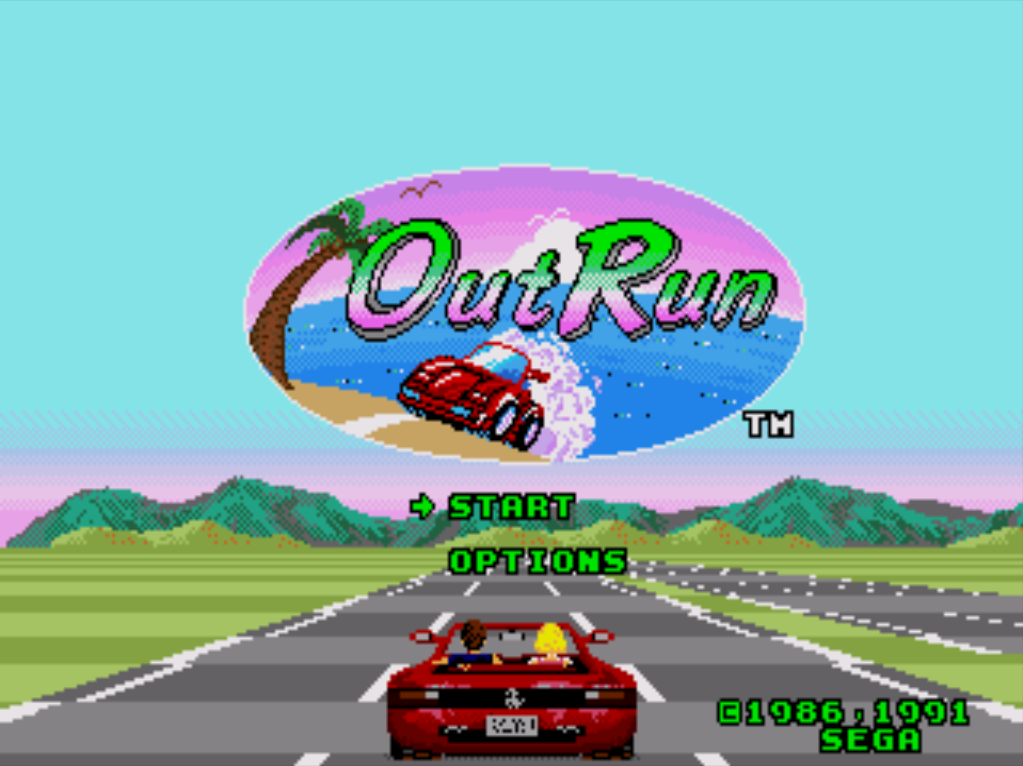OUTRUN (SMD)
It’s easy to wonder sometimes how SEGA might have been remembered had Sonic remained a mere glint in the eye of it's designer. Alex Kidd is still foremost in the memories of many, though more likely due to the manner in which it aped Mario than any world-beating credentials of its own. Perhaps the most iconic image of SEGA’s pre-hedgehog era was that of a red, open-top Ferrari Testarossa, surrounded by media and press, sat at the start line ready for a checkpoint-chasing road-trip of epic proportions. And the game in question was Outrun.
Populating arcades as early as 1986 but taking a hefty five years to make it to the Mega Drive, Outrun is a racer that focuses on accessible, high-speed thrills and against-the-clock racing whereby the player’s chief goals include keeping ahead of the clock, weaving through traffic at highly-illegal speeds, and, given half a chance, admiring the changing of the scenery too. As one of the first racing games to break from the tradition of top-down viewpoints, putting the camera directly behind the player’s car and right in amongst the action, the arcade game proved enduringly popular. It was also greatly aided by the steering wheel, gear-stick and pedals combination, which made for some thrilling moments. The question for the home console version would be, could Outrun make a successful transition without the aid of these technical accessories?
Sadly, it isn’t able to recapture the unique playability of the arcade game, though as a standalone racer, is competent enough. The handling of the Ferrari is responsive, solid and easy to pick up, though seems undemanding and plain next to the steering wheel of the coin-op. The racing (or ‘driving’ as designer Yu Suzuki later described it) soon becomes a bit of a chore, as little input is required to navigate the roads. More emphasis shifts to avoiding the traffic, as even a slight scrape with another motorist can result in a costly spin.
The main innovation here is a split-route system, seemingly designed to bolster the variety and long-term appeal of the playing experience. The racing doesn’t take a break at any stage, though towards the end of every 70-second section you are prompted with a simple left/right fork in the road, leading to a new stage and the scenery transitioning from one background to the next. It remains a brilliant feature, allowing the action to move seamlessly through beaches, deserts, mountains and cityscapes, with the player able to plot different routes on a whim. The routes tend to throw up similar challenges, though with varying degrees of traffic, hazardous scenery and twisting corners.
The main innovation here is a split-route system, seemingly designed to bolster the variety and long-term appeal of the playing experience. The racing doesn’t take a break at any stage, though towards the end of every 70-second section you are prompted with a simple left/right fork in the road, leading to a new stage and the scenery transitioning from one background to the next. It remains a brilliant feature, allowing the action to move seamlessly through beaches, deserts, mountains and cityscapes, with the player able to plot different routes on a whim. The routes tend to throw up similar challenges, though with varying degrees of traffic, hazardous scenery and twisting corners.
By 1991, certain elements, most notably the trackside scenery, had fallen behind the visual standards being set by the likes of Super Monaco GP. The presentation remained vibrant and attractive however; menu screens were lifted straight from the coin-op, and complimented by some stylish option and high-score boards. In-game, the Ferrari really looks the part, as do the driver and famed ‘blonde girlfriend’ sprites whose hair flaps around in the wind as you drive. Though the racing quickly gets samey, the backgrounds offer some diversity, with some colourful and eye-catching scenic vistas. On a more negative note, the sensation of speed is inconsistent, whilst the manner in which trackside scenery and fellow motorists move is jerky and generally unconvincing too.
Despite a feeling that the package as a whole was dated by 1991, SEGA’s strong presentation continues to permeate Outrun. Prior to a race you are prompted with an in-car view, with a shot of your driver tuning the radio every time you highlight a different tune, a touch still so beloved of Outrun fans. The songs ‘Magical Sound Shower’ and ‘Passing Breeze’ remain favourites, though the audio quality on the whole is fairly average, as the remaining jingles start to grate despite their bubbly nature.
Despite a feeling that the package as a whole was dated by 1991, SEGA’s strong presentation continues to permeate Outrun. Prior to a race you are prompted with an in-car view, with a shot of your driver tuning the radio every time you highlight a different tune, a touch still so beloved of Outrun fans. The songs ‘Magical Sound Shower’ and ‘Passing Breeze’ remain favourites, though the audio quality on the whole is fairly average, as the remaining jingles start to grate despite their bubbly nature.
It is quite possible to complete Outrun on your first attempt if you plump for the gentler skill settings. There are six difficulty levels to tackle, and five finish lines to reach, each rewarding you with a short ‘n’ simple animated sequence upon reaching them, so die-hard fans will probably squeeze a little more value from these as well as the prospect of beating high-scores. Disappointingly, there is no two-player mode included within, which is something of a surprise, and an opportunity greatly missed.
Outrun’s trip to the Mega Drive proves a solid if short-lived one. It lacks the style, speed and enjoyment of its arcade sibling and by the time of its belated port, its content seemed less substantial than many of its competitors. It manages to handle the presentation and technical aspects required fairly well, though without the steering wheel, the console version feels unremarkable.
Outrun’s trip to the Mega Drive proves a solid if short-lived one. It lacks the style, speed and enjoyment of its arcade sibling and by the time of its belated port, its content seemed less substantial than many of its competitors. It manages to handle the presentation and technical aspects required fairly well, though without the steering wheel, the console version feels unremarkable.
